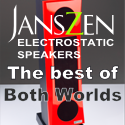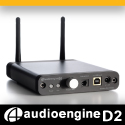|
|
You are reading the older HTML site
Positive Feedback ISSUE 64
einstein The Flash and Thunder cables as reviewed by Danny Kaey
So cable reviews aren't really the hottest thing to do. Just imagine, no bling audio jewelry "boxes" to look and gaze at; no spectacular fit and finish to drool and fascinate over; once your system is connected, you typically won't give them another glance or three until the time has come to either replace them or dust and vacuum the floor around them. The life of a cable—it ain't glamorous, that's certain. I suppose it would then follow that reviews of such cables thusly aren't all that hot to type either, especially given the fact that their prize certainly doesn't achieve nearly the perceived buzz of say a new amplifier or shiny preamp during typical audiophiliatalkamongst your usual Sunday morning posse. Heck, given all this and then some, one may even ponder the penultimate question: why bother? Which of course is usually followed by the ultimate question: does it really matter all that much? Unequivocally, yes, it sure does. At least, that is my authoritative conclusion after years and years of careful research surrounding this subject matter. Gotcha. Truth is, I really haven't researched this much—if at all—only because I am not your typical tweaky audiophile, especially when it comes to ancillary gear such as cables, racks, footers, cones, spikes and the like. I do spend some time gathering basic info, though I quickly pick a winner and usually go with that choice until something else comes along that promises definitive improvements, one way or another. And then of course, there's that certain thing associated with such value-added items. Some refer to it as gimmickry, witchcraft, sorcery, or utter nonsense; others refer to it via much more common names: cow cookies, meadow muffins, road apples, or, in far less technical terms simply bullcrap. You see, a long time ago some clever audio guru somewhere discovered the ancient art of selling snake oil to the masses promising this and that, youthful elixirs for an instant younger age, and more importantly of course, better sound. You have been warned: two, three or even four grains of salt aren't optional they are in fact necessary. But like with so many other things in life, there are, in fact, honest people left who really do make a case for such improvements, scientific proof and all included. Could it really be that simple? Sure thing; given the fact that components all have their sonic attributes, it would follow that the cables connecting these would have an influence on the sound as well. The art and science of good cable design is a fairly well known and understood subject matter for the most part, i.e.. the fundamentals. Look at what the military uses, or what is necessary for proper medical installations, etc. Surely these applications are not built around fringe science. Thus, given all that, you won't be surprised to find my personal references for cables to include such well regarded names as Kubala-Sosna, Nordost and Zu Audio. Each of these are terrific value-adds; each of these will in fact improve the sound of your system, and in each case the improvements are always unanimous as being net positive to the sound. Much like my most recent thoughts on having multiple systems for different (all are great at the echelons we refer to as high-end audio) sonic experiences, it follows, then, that having multiple cables to achieve similar goals is merely an extension of that philosophy. Enter the team behind Einstein Audio, who for the past two plus decades have been crafting absolutely exquisite looking and even better sounding audio components in Bochum, Germany. With their distinctive shiny looks of glass, chrome plated steel, and machined aluminum chassis, Einstein components are instantly recognizable as works of art. Add to that innovative, classically engineered audio circuits and you have a recipe for state of the art sound. When, during a conversation at last year's CES, Volker Bohlmeier (principal and owner of Einstein), offered me to review their complete setup, i.e.. Einstein's The Preamp/linestage hybrid, The Light In The Dark Limited Edition amplifier, The Turntable's Choice MK II phono amp, and a complete set of their interconnect (balanced and RCA) and speaker cables, I immediately jumped aboard. Not often does a reviewer get the chance to experience a complete system, as envisioned by the company's principal and a top-rated and respected one at that. A few production facility delays ensued, but by summer I was rolling in the deep, as Adele would sing. When I inquired with Volker as to the reasons behind his newly launched cable line, he merely stated that he felt it was an often under looked part of the overall component system approach design process, and that based on the time and research Einstein had spent developing their various audio technologies, calls for a home made cable line became louder and louder with each component generation. Naturally, this being Einstein, good enough wasn't an option. No, if as Volker contended, this cable line is to carry the Einstein logo, then these cables had to be special indeed. Otherwise, as he called it "why bother?" Indeed, meticulousness and engineering prowess go hand in hand with Volker and his team. Partnering up with an outside resource, KonradWächter, who had more than 40 years of cable design for various aerospace, medical, and IT infrastructure, seemed the logical next step. Thus, many trial runs and comparisons to the best the world had to offer later, Einstein's new audio cable line up emerged, aptly and uniquely named The Flash (interconnect) and The Thunder (loudspeaker). At around $4000 per 1 meter pair for the interconnect (RCA) and around $6000 per 2 meter pair for the speaker cables (Banana), these would in fact be the most expensive cables I'd ever auditioned. Deploying technologies such as graphite tapered pure Teflon for high frequency shielding, pure high crystalline silver solid core wire, and oxygen free high crystalline solid core copper wire, as well as paying special attention to the actual cable terminations, I was eager to give these Wunderkind cables a try.
What I ended up with was a complete Einstein system consisting of the aforementioned Einstein preamp, hybrid tube amp, and phono stage, sourced via my trusted two references, the Brinkmann LaGrange / Brinkmann 12.1 / Brinkmann tube power supply and Ortofon A90 acting as my analog front and the stupendously great Playback Designs MPS-5 / early 2012 MacBook Air / Drobo as my digital front end. Now then, all that was missing was music. What was perhaps—and rather quickly at that—the first evidence of something special playing was the fact that the system seemed to have gained far greater dynamic resolution and a greater sense of clarity. Admittedly, I was quite a bit surprised at these revelations, as it appeared that virtually any and all music seemed to gain quite a bit of … ahem…Flash and Thunder. Background blackness went up (or down, depending on how you look at it) several notches, corresponding with the greater dynamic clarity I was hearing. Attack, sustain, and decay of each note appeared much more clearly, that is, music as a whole seemed more present and involving. The sheer speed at which certain dynamic swings occurred was downright astounding, especially when playing music demanding such contrasting back and forth swings. No matter the source being used, cuts which I had known inside out, appeared to show up time and again revealing greater detail and insight into the recording, without the usual fatigue factor sometimes associated with greater clarity.
To make sure that these positive effects weren't simply a figment of my humble imagination, I did what I typically do when evaluating various cables: I disconnected the Einstein cables and replaced them one by one with my other reference cables. Indeed, as each strand was replaced, the previously described enhancements began to shrink in size and appearance. And herein lies one of the benefits of discussing cable vs. component reviews. You see, when you reach a certain echelon of cable design, the cumulative effect of replacing your entire cable lineup becomes the potential equivalent of replacing an actual component: a disc player / DAC, a preamp or amplifier. Don't ask me why—I don't even begin to pretend to understand the science behind cable design—all I am reporting is what I actually hear. Thus, unlike a major component replacement, you can over time, and as your wallet permits, replace more and more cables until you have reached that aforementioned component equivalent effect, CEE for short (that, dear friends, is a total DK special concoction). Talk about value added. In short, the time spent with these Einstein cables has reaffirmed my previous beliefs that your system will never resolve its final potential until you have connected it with the appropriate electrical conductors. Truly I say, I have seen and heard systems of even modest proportions take on new life and meaning if given the proper dose of wires. In my case, the Einstein cables have definitively improved upon the status quo by declaring a far clearer path to my music library. All my music benefited from this change, but play a truly special, nay, magical recording, say Muddy Water's Folk Singer (now on QRP's 45rpm superior pressing) and you in fact get transported that much closer to the studio and recording event. But wait, there's more candy in the dish. Making deliberate use of other components I own and have access to at casa Kaey, I was not surprised in the least to find that these Einstein cables did in fact improve the sound of those systems as well. My trusted darTZeel integrated was the recipient of this overall better defined sound, as was a pairing of the preamp's portion of the darTZeel with my Quad II Anniversary Jubilee monoblocks: instant satisfaction and bliss. Here again I saw much of what the big Einstein rig was able resolve in greater detail. Add to that, Einstein's approach to cable setup and care (yep, there's something you don't hear all that often) by way of including—as part of the purchase of each set—cable separators and a contact cleaning fluid kit, and you quickly realize these weren't part of some fly-by-night, prince-of-darkness operation. No, as mentioned earlier, Volker's belief is rooted in seeking out perfection as close as possible, no matter the product. As an aside—we don't want to veer too far off course—those cable separators really do make a difference. Subtle, yes, but still a definite add in value to the sound. In the end, isn't that what this is all about? The Flash and The Thunder then, are no brainer upgrades, dare I say, must haves for anyone owning Einstein gear. Even if you don't happen to own any Einstein components, these are, in my opinion, top flight upgrades for any system whilst giving you a first hand entry into the appreciation for Einstein's vision and excellence. You will quickly get a sense of what Volker and team are all about. Most highly recommended, A+++. Danny Kaey
The Flash (interconnect)
The Thunder (loudspeaker)
Einstein
|







